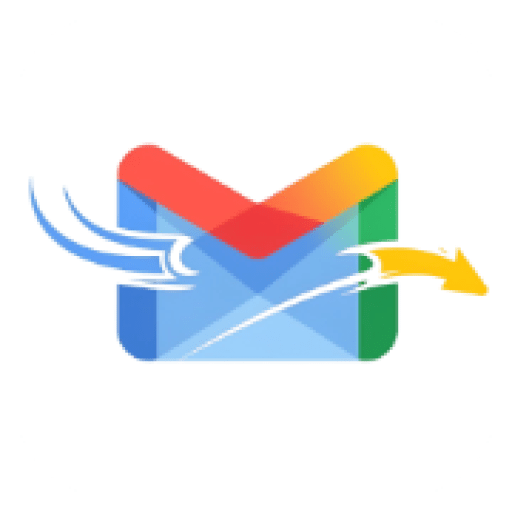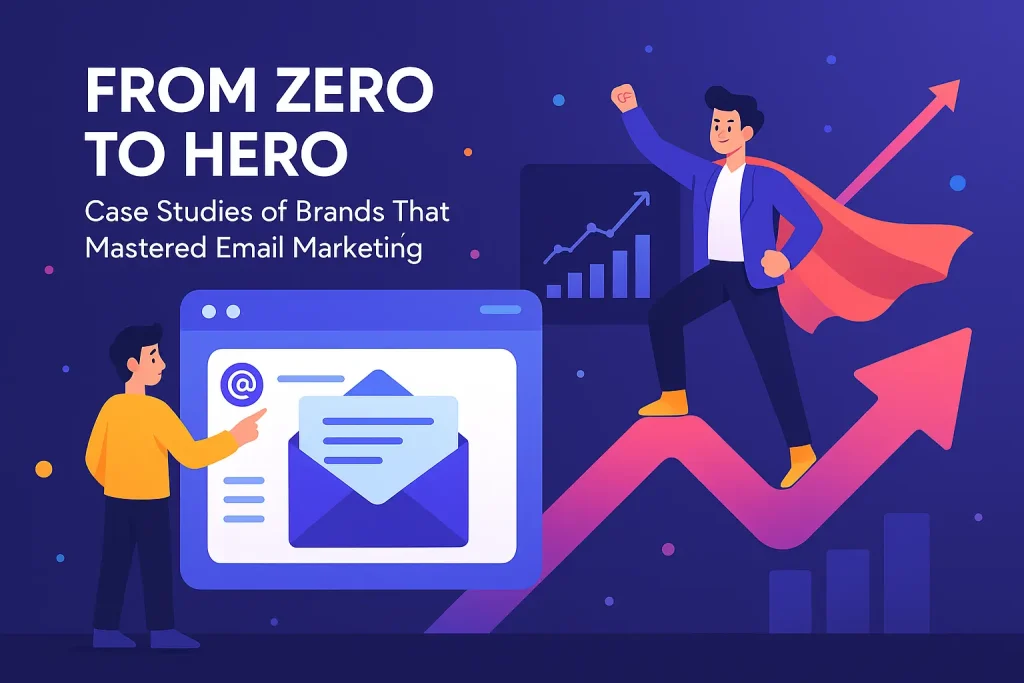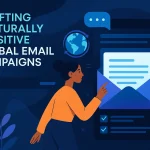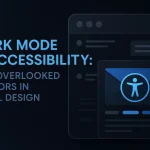Email marketing is key for businesses to reach their audience and boost sales. Successful email marketing campaigns can change a brand’s image. They can make unknown brands well-known.
Many brands have seen big wins with smart email marketing plans. Looking at these email marketing success stories helps us learn what works.

This article will look at how these brands made it big. We’ll see their strategies and how you can use them for your campaigns.
Table of Contents
The Power of Email Marketing in Today’s Digital Landscape
Email marketing is very effective today. It’s amazing how email stays important even with new digital ways. Brands use it to reach their audience.
Why Email Marketing Stands Out
Email marketing is great because it’s direct and personalized. It goes straight to the inbox. This lets brands talk to people in a special way.
- High return on investment (ROI)
- Ability to personalize content
- Effective for nurturing leads
These reasons make email marketing better than other digital ways. It gets more people involved and helps sell more.
Key Metrics That Define Email Marketing Success
Brands check a few important things to see if their email marketing works. They look at open rates, click-through rates (CTR), and conversion rates. This helps them know what their audience likes and make their emails better.
- Open rates show how many people opened the email.
- CTR tells how many people clicked on a link in the email.
- Conversion rates show how many people did what the email asked.
By looking at these numbers, brands can make their email marketing even better.
From Zero to Hero: Case Studies of Brands That Mastered Email Marketing
Many brands have faced big challenges in email marketing. But some have overcome these and found great success. They changed their email strategies to win big.
Common Challenges Brands Face with Email Marketing
Brands often struggle to make good email campaigns. They face low open rates, not enough personal touch, and hard-to-measure success. For example, making catchy subject lines is tough.
To beat these hurdles, brands use smart strategies. They make emails more personal with data. They also keep their email lists fresh and relevant.
Transformation Patterns in Successful Email Campaigns
Great email campaigns show clear patterns. They focus on personal content, use automation, and aim for clear results. Brands that excel in email marketing have made big changes in these areas.
Some brands boost their open rates with better subject lines. Others see more sales by adding dynamic content to their emails.

| Challenge | Strategy Adopted | Result |
|---|---|---|
| Low Open Rates | Personalized Subject Lines | 25% Increase in Open Rates |
| Lack of Personalization | Dynamic Content Integration | 40% Increase in Conversion Rates |
| Difficulty in Measuring Success | Adoption of Advanced Analytics | Improved ROI Measurement |
Airbnb: Personalization at Scale
Airbnb uses data and tech to make emails personal. This helps them connect with users better. It makes the experience more enjoyable.
How Airbnb Revolutionized Their Email Strategy
Airbnb started by understanding what users like and do. They used this info to send targeted emails.
Key Tactics: Dynamic Content and Behavioral Triggers
Airbnb made emails better with dynamic content and triggers. They did this by:
- Using user data to personalize content
- Triggering emails based on user behavior
Location-Based Recommendations
Airbnb suggested places and activities based on where users are. This made their tips more relevant.
Traveler Milestone Celebrations
They also celebrated when users reached travel milestones. This made users feel special.
Results and Lessons from Airbnb’s Approach
Airbnb’s email strategy worked well. They saw better engagement and more conversions. The main lesson is to use data for personalization.
| Tactic | Result |
|---|---|
| Dynamic Content | Increased Engagement |
| Behavioral Triggers | Improved Conversion Rates |
| Location-Based Recommendations | Enhanced User Experience |

Spotify: Turning Data into Engaging Email Experiences
Spotify has millions of users. It knows how to make emails that people love. This is because it uses data to make emails just for each person.
Spotify’s Journey to Email Marketing Excellence
Spotify started by learning what its users like. It looked at their listening habits. Then, it sent emails that matched what each person likes.
The Genius Behind “Wrapped” Email Campaigns
“Wrapped” is a big hit for Spotify. It shows what music each user listened to most. People love it and share it a lot.
How Spotify Achieves High Open and Engagement Rates
Spotify gets lots of people to open its emails. It does this with personalized music recommendations and timing and frequency optimization.
Personalized Music Recommendations
Spotify uses what you listen to to suggest new music. This makes each email special for you. It keeps you coming back for more.
Timing and Frequency Optimization
Spotify figures out the best time to send emails. It looks at when you’re most likely to check your email. This way, you’re more likely to open it.

| Email Marketing Strategy | Description | Impact |
|---|---|---|
| Personalized Recommendations | Using user data to suggest new music and artists | Increased user engagement and retention |
| Timing and Frequency Optimization | Analyzing user behavior to optimize email sending | Higher open and click-through rates |
| “Wrapped” Campaigns | Annual summary of users’ listening habits | Significant user engagement and social media buzz |
HubSpot: B2B Email Marketing Mastery
HubSpot has changed B2B email marketing with new ideas and data. It uses content to help leads grow and convert.
Content-Driven Email Strategy
HubSpot’s success comes from its content strategy. It makes content that people find valuable and interesting. This builds trust and makes the brand a leader in its field.
Lead Nurturing Sequences That Convert
HubSpot’s email success is thanks to its lead nurturing. These sequences teach and inform people, helping them move through the sales process.
Educational Content Progression
HubSpot uses educational content to grow leads. It gives useful info at each buyer’s journey stage. This keeps people interested and engaged.
Sales Alignment Techniques
HubSpot also aligns its emails with sales goals. This makes it easier to turn leads into customers.
Measurable B2B Email Marketing Results
HubSpot’s email marketing is very effective. It has improved engagement and conversion rates a lot.

HubSpot’s focus on content and lead nurturing is a great example. It shows how to improve email marketing for other businesses.
Sephora: Building Loyalty Through Strategic Email Marketing
Sephora is great at email marketing. They make customers loyal by sending them special emails. This is a successful email marketing example for other brands.
Sephora’s Beauty Insider Program and Email Integration
Sephora’s Beauty Insider program is key to their loyalty plan. They link this program with their emails. This makes shopping smooth for customers.
Members get emails that match their status and what they’ve bought.
Segmentation Strategies That Drove Conversion
Sephora’s email wins come from smart grouping. They split their list into groups for better emails.
Purchase History Segmentation
They look at what customers buy to suggest more. For example, if someone loves skincare, Sephora emails them about new skincare items.
Preference-Based Targeting
Sephora lets customers choose what they like. This way, they send emails that match what customers want. Whether it’s makeup, fragrances, or skincare, Sephora makes sure it’s right.

Measurable Impact on Customer Retention and Lifetime Value
Sephora’s email strategy really works. It keeps customers coming back and boosts their loyalty. This makes Sephora a favorite for many.
Dollar Shave Club: Email Humor That Sells
Dollar Shave Club made email marketing fun. They sold razors but also built a fun brand. Customers loved it.
Building a Distinctive Email Voice
Dollar Shave Club’s emails are funny and smart. They talk like a friend. This makes customers excited for their emails.
Their humor is real and fun. They share cool behind-the-scenes stuff. This makes customers feel close to the brand.
Subscription Retention Strategies via Email
Dollar Shave Club keeps customers by sending special deals. They make customers feel special with special offers and discounts.
| Strategy | Description | Impact |
|---|---|---|
| Personalized Offers | Tailored promotions based on customer preferences | Increased customer loyalty |
| Humor and Entertainment | Using humor to make emails enjoyable to read | Improved engagement rates |
| Behind-the-Scenes Content | Sharing stories about the brand and its products | Enhanced brand authenticity |
Balancing Entertainment and Conversion
Dollar Shave Club knows how to mix fun and sales. They make emails that are both fun and useful.
They mix promotions, learning, and fun stories. This keeps emails interesting. It also helps them sell more and keep customers happy.
Common Elements of Successful Email Marketing Campaigns
Looking at email campaign success stories shows us what works. These patterns help marketers do better. They get more people to open and act on their emails.
Personalization Strategies That Drive Results
Personalizing emails is key. Customizing content for each person makes emails better. Using names, past buys, or browsing history makes emails more personal.
It’s also smart to sort email lists well. This means sending the right emails to the right people. It’s based on who they are, what they buy, or how they act.
Automation Workflows That Save Time and Increase Engagement
Automation is very important too. Automated emails send messages at the right time. Welcome emails, cart reminders, and birthday wishes are great examples.
Good automation helps guide people through buying. It makes sure they get the right info when they need it.
Testing and Optimization Approaches
Testing and improving is key for email success. Try different things in emails, like subject lines or calls-to-action. See what works best.
A/B Testing Best Practices
When A/B testing, change one thing at a time. This lets you see what really makes a difference. Also, make sure you have enough data for good results.
Continuous Improvement Frameworks
Having a plan to keep getting better is important. Always check how your emails are doing. Use what you learn to make your next emails even better.
| Strategy | Description | Benefit |
|---|---|---|
| Personalization | Tailoring content to individual preferences | Increased engagement and conversion |
| Automation | Automating workflows for timely emails | Saves time and increases engagement |
| A/B Testing | Testing different email elements | Improves campaign effectiveness |
Measuring Email Marketing ROI: Metrics That Matter
To really know how email marketing works, we need to measure its return on investment (ROI) well. Good email marketing is not just about getting people to open emails. It’s about getting them to engage, buy things, and make money.
Stories of successful email marketing often show how to measure and improve. By looking at the right numbers, brands can make their emails better.
Beyond Open Rates: Engagement Metrics for Modern Email Marketing
Open rates are just the start. Engagement metrics like click-through rates (CTR), conversion rates, and how often emails are shared give us more info. They show how people interact with our emails.
For example, a high CTR means people like what they see and click on it. Watching these numbers helps us see if our emails are working well.
Attribution Models for Email Campaign Success
Attribution modeling is key to seeing how email marketing helps the business. By using attribution models, we can see how each email touchpoint helps. This includes emails.
This way, we can see how email marketing leads to sales. We can then understand its value. There are different models, each showing a part of the customer’s path.
Benchmarking Your Results Against Industry Standards
To see how well email marketing is doing, we need to compare it to others. We look at things like open rates, CTR, and how many people buy something. We compare these to what others in the industry do.
By comparing, we can see what we can do better. It helps us set goals and see how we stack up. This way, we can make our emails even better.
Conclusion: Your Path from Zero to Email Marketing Hero
The journey to becoming an email marketing hero starts with planning and creativity. You need to know your audience well. Look at brands like Airbnb, Spotify, and Sephora. They show how good email campaigns can work.
These brands used personalization and data to succeed. Think about how you can use these ideas in your own emails. This could help you a lot.
Make your emails interesting and relevant. Use things like dynamic content and triggers. This way, you’ll keep your subscribers happy and engaged.
Starting your email marketing journey is exciting. Remember, you can get from zero to hero with the right steps. And don’t forget to learn from others’ successes.
FAQ
What makes email marketing relevant today?
Email marketing is great because it sends personalized content right to people’s inboxes. This helps get more engagement and sales.
How do brands measure email marketing success?
Brands check things like how many people open emails, click links, and buy things. They also look at how much money they make from emails.
What challenges do brands face with email marketing?
Brands struggle with tired lists, not being personal enough, and figuring out if emails are worth it. They can fix this by making lists more specific, adding personal touches, and tracking their emails well.
How did Airbnb make their emails personal?
Airbnb made emails personal by using special content and knowing what each person likes. They even sent emails based on where you are and what you’ve done before.
What made Spotify’s emails so popular?
Spotify’s emails were a hit because they gave people music they’d like. They also sent emails at the right time and made them fun and engaging.
How do B2B companies like HubSpot use email marketing?
B2B companies like HubSpot use email to share useful content. They also send emails to help leads learn and grow, and to help sales teams sell more.
What was key to Sephora’s email marketing success?
Sephora’s success came from dividing their list into groups based on what people bought. They also targeted emails based on what people liked. This helped them sell more and keep customers coming back.
How did Dollar Shave Club use humor in their emails?
Dollar Shave Club made their emails fun and funny. This made people enjoy reading them and helped sell more products.
What makes a good email marketing campaign?
Good campaigns are personal, automated, and always getting better. They use tests and keep improving to get better results.
How can marketers measure email marketing ROI?
Marketers should look at more than just who opens emails. They should see who clicks, buys, and how much money they make. This helps understand if emails are really worth it.




I love how you emphasized knowing your audience! It’s amazing how many businesses overlook this part of the strategy. Crafting emails based on customer behavior and preferences really does lead to stronger results.
You nailed it with the point about email’s staying power. Even with all the newer platforms out there, email still offers a direct and personal way to connect—especially when paired with clear CTAs and consistent, value-packed updates.
The emphasis on personalization and regular engagement really stood out to me. It’s easy to overlook how powerful a consistent, thoughtful email strategy can be—especially when it comes to nurturing long-term customer relationships.